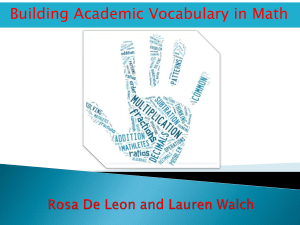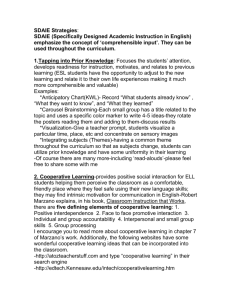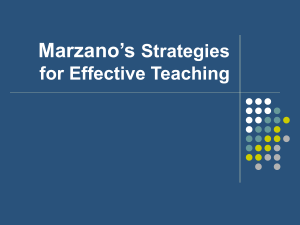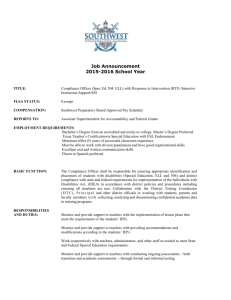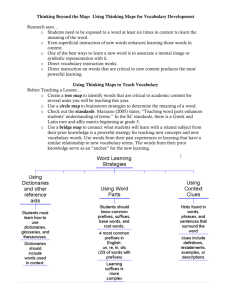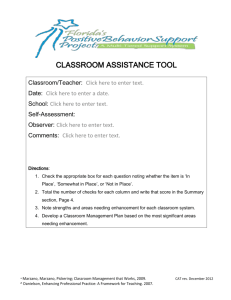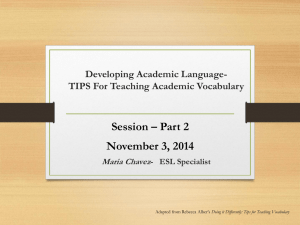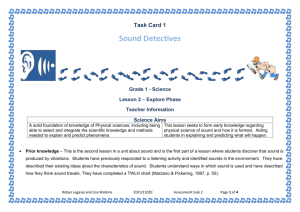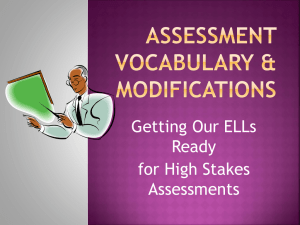Academic Vocabulary Handout
advertisement
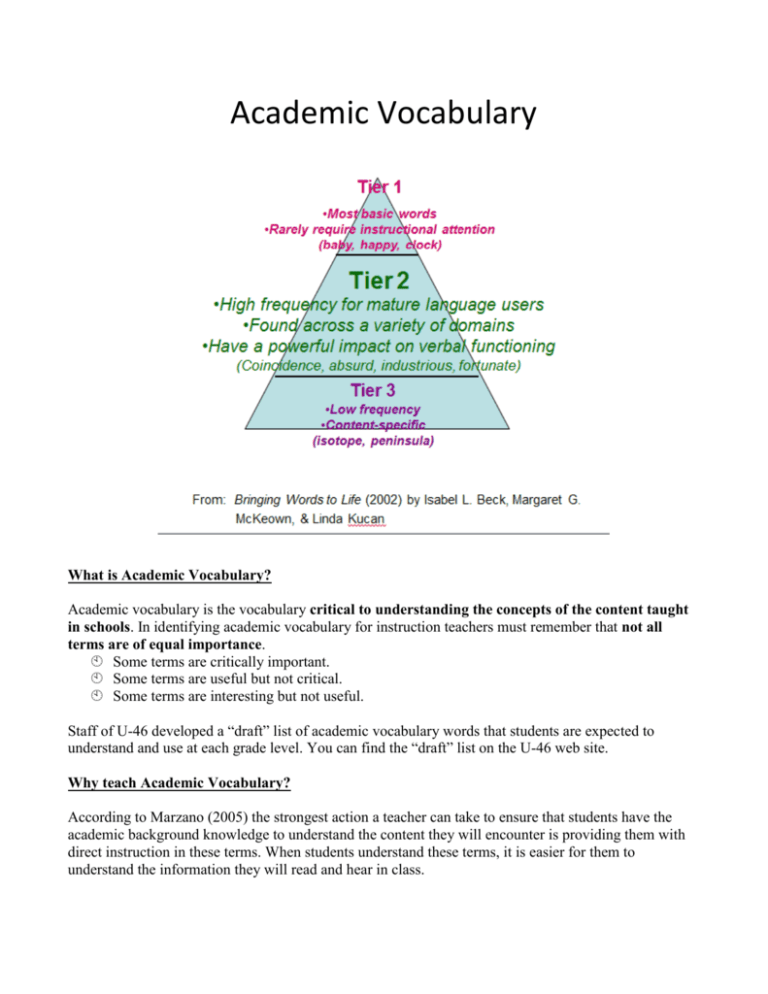
Academic Vocabulary What is Academic Vocabulary? Academic vocabulary is the vocabulary critical to understanding the concepts of the content taught in schools. In identifying academic vocabulary for instruction teachers must remember that not all terms are of equal importance. Some terms are critically important. Some terms are useful but not critical. Some terms are interesting but not useful. Staff of U-46 developed a “draft” list of academic vocabulary words that students are expected to understand and use at each grade level. You can find the “draft” list on the U-46 web site. Why teach Academic Vocabulary? According to Marzano (2005) the strongest action a teacher can take to ensure that students have the academic background knowledge to understand the content they will encounter is providing them with direct instruction in these terms. When students understand these terms, it is easier for them to understand the information they will read and hear in class. Factoids th • Vocabulary assessed in first grade predicted over 30% of reading comprehension variance in 11 grade (Cunningham and Stanovich, 1977). • While four encounters with a word did not reliably improve reading comprehension, 12 encounters did (McKeown, Beck, Omanson, and Pople, 1985). • One of the most critical services a teacher can provide, particularly for students who do not come from academically advantaged backgrounds, is systematic instruction in important academic terms (Marzano and Pickering, 2005). th • The same student placing at the 50 percentile in reading comprehension, with no direct vocabulary rd instruction, placed at the 83 percentile when provided specific instruction in academic vocabulary (Stahl and Fairbanks, 1986). ELL Students and Academic Vocabulary Marzano and Pickering (2005), emphasize the importance of teaching ELL academic vocabulary in a systematic approach. They suggest that vocabulary programs that emphasize high-frequency terms fail to provide the background knowledge needed for student success in the content areas. Students learn high-frequency words through wide reading of fiction and informational text. Six step process for teaching Academic Vocabulary The process of teaching Academic Vocabulary includes six steps. The focus of steps 1-3 is on introducing new terms and steps 4-6 offer ways to review the terms providing students with a deeper insights. 1. Provide a description, explanation, or example of the new term. If working with ELL students the teacher should first provide the description in the native language and a visual representation of the word. 2. Ask students to restate the description, explanation, or example in their own words. ELL students may write their definition in their native language. 3. Ask students to construct a picture, symbol, or graphic of the term. This activity is critical for ELL students. 4. Engage students every other week in activities that help them add to their knowledge of the terms. 5. Every other week ask students to discuss the terms with one another. 6. Once a week involve students in games that allow them to play with the terms. References Cunningham, A. and Stanovich, K. (1977). Early reading acquisition and its relation to reading experience and ability 10 years latter. Developmental Psychology, 33, 934-945. Marzano, R. and Pickering, D. (2005). Building academic vocabulary: Teacher’s manual. Alexandria, VA: ASCD. McKeown, M., Beck, I., Onanson, R., and Pople, M. (1985). Some effects of the nature and frequency of vocabulary instruction on the knowledge and use of words. Reading Research Quarterly, 20, 522-535. Stahl, S. and Fairbanks, M. (1986). The effects of vocabulary instruction: A model-based meta-analysis. Review of Educational Research, 56, 72-110.
